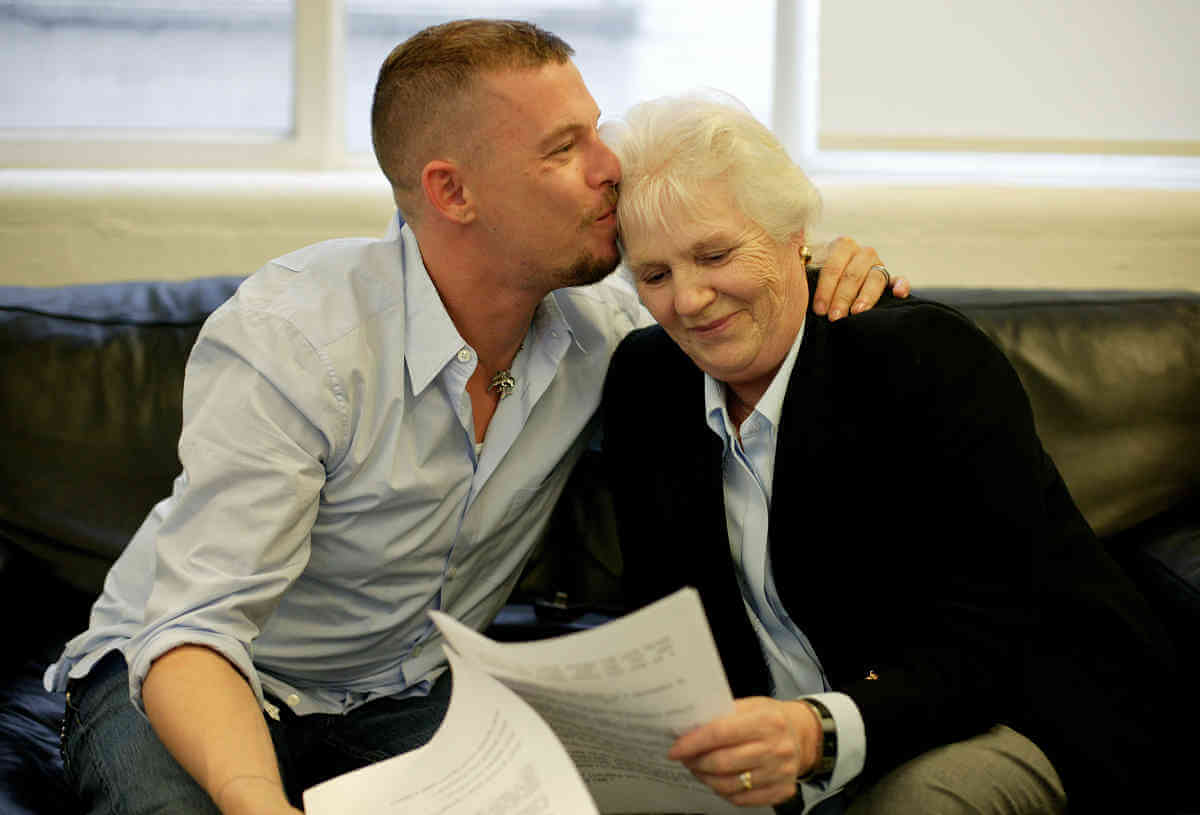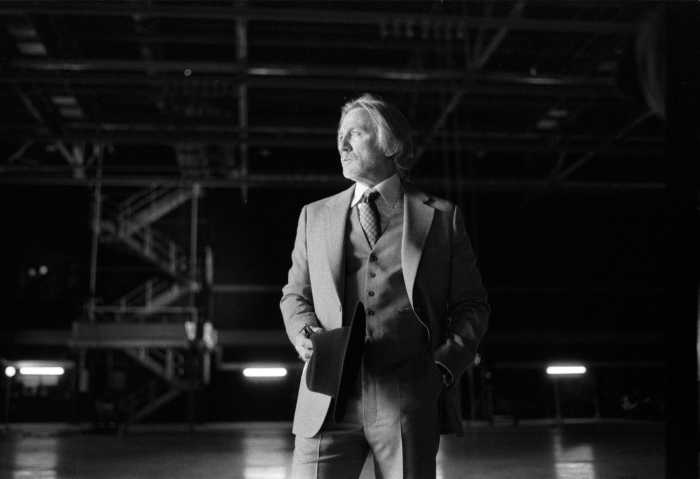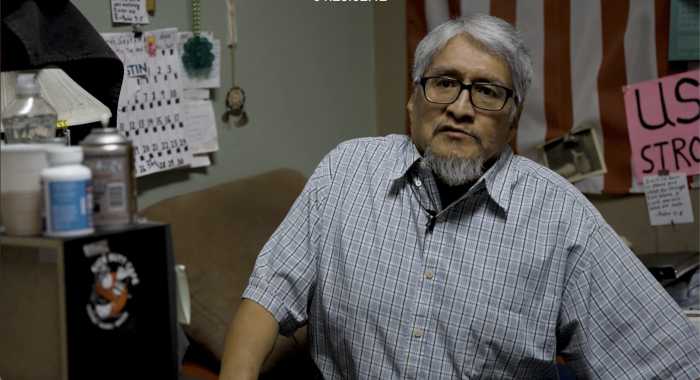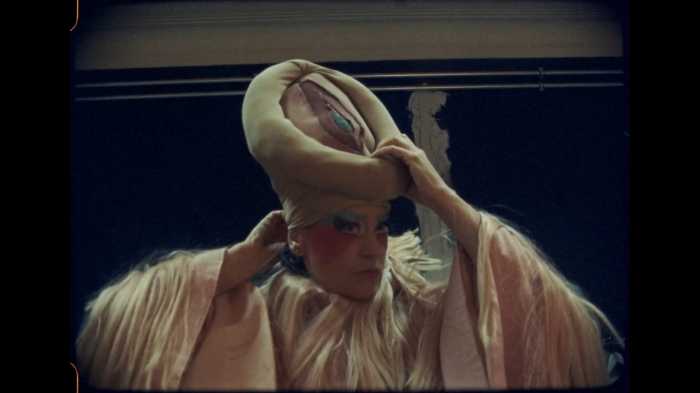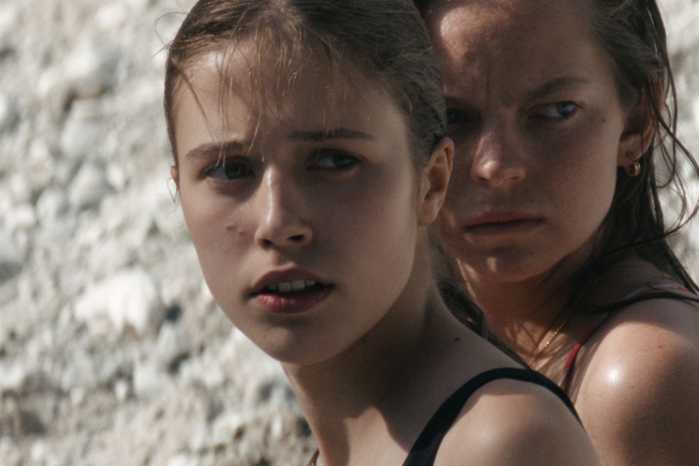The 1990s and early aughts were a golden age of fashion, largely for the presence of two genius designers, John Galliano and (Lee) Alexander McQueen, who would have been great in any age. Galliano’s brilliance lay in his glorification of romance — and sex — filtered through the prism of couture’s history and its myriad techniques, all of it brought together like the richest of banquets. McQueen was much darker and edgier, always pushing the envelope of good taste and the latest technology, whether it be in his dazzlingly fresh fabrications, the use of robots on his runway, or the butt cleavage visible in his scandalous “bumster” low-riding trousers, which put him on the map.
Like two phoenixes, however, they soared to the heights of dazing achievement and then crashed and burned young: Galliano with a career-killing, drunken, anti-Semitic rant caught by a cellphone in a Paris café, and McQueen — beset by addiction and severe, lifelong depression originating in childhood abuse and exacerbated by the poisonous pressures of his career and the deaths of loved ones, including his beloved mother — hanging himself at 40 in 2010.
“McQueen,” a new documentary by Ian Bonhôte and Peter Ettedgui, tackles the short but densely packed life and career of this true, tortured artist, with immense sensitivity and perception.
Although it’s take is basically a “Behind the Clothes” approach, the film is mercifully free of overt glitz or glib tabloid sensationalism, presenting a really soul-stirring, deeply intimate portrait of a man who was so right — and blindingly innovative — about what to put on one’s back, but so devastatingly wrong about how to live your life, once you are attired so impeccably.
DAVID NOH: First of all I want to thank you for such a sensitive, beautiful and moving portrait of a man whom I, like so many others, idolized. I followed his extraordinary work from the beginning, collected and wore his clothes — pieces I bought over 25 years ago I still wear today and people rave over them. And, like so many others, I was shattered by his death and bewildered by it. Your film gave me so many answers to my questions.
PETER ETTEDGUI: Well, thank you so much for that. It means a lot to us, and I have to say that I knew about McQueen through my father [Joseph Ettedgui], who was in the fashion business, with a chain of stores, including Joseph. He had been introduced to McQueen by Isabella Blow and carried his fashion from the beginning.

I remember all the sensational tabloid coverage of him and his outrageous shows, and my father would say, “You have to put all that rubbish aside, because this guy is really the most genius craftsman and tailor working today.” And, although I wasn’t in the fashion business at all, there was always this intrigue and interest about him unlike any other designer In the ‘90s and early 2000s, you couldn’t escape him. He was so active in a number of different areas, a cultural phenomenon, and yet we were also so aware of a tragic quality in him, which was why, at the height of his powers, he took his life.
And that was the story that interested us. Although neither of us were interested in the fashion business, we were so passionate about making this film.
NOH: If nothing else, your film is important because of the way it shows so many toxic aspects of this business. I dipped my toe in it once, loving fashion as I did, but ran away from it screaming, very quickly. Everything was so perfectly beautiful on the outside and absolutely hideous on the inside, the ugly, inhumane way people behaved and treated each other. Your wonderful interviews with his close friends and assistants, like Mira Chai Hyde and Sebastian Pons, were so revealing about all the unbearable pressures and crap people had to go through just to make something beautiful to wear. But I was most impressed by the participation of McQueen’s family! How did you get their involvement? I’m sure there were and are other McQueen projects in the works, if nothing else.
IAN BONHÔTE: Yes, there was another project like ours. It wasn’t easy at first to convince people to participate, and we actually did not try to. What we did was we tried to expose why we wanted to do the film and let them decide for themselves.
In terms of the family, our break came when we met Gary McQueen, his nephew, who worked with him, and through him we met his sister, Janet. We spent a couple of hours, talking to her, and at the end of the interview she said she had a really great time and knew that our film would not focus on all the sensational elements of his life [excessive drug and alcohol abuse, unsavory sexual liaisons, and more].
We never asked her to do the film but we kept in touch and were talking one day when she suddenly asked, “Would you like me to do an interview for your film?” We never pushed it, but always had a very respectful approach to people.

There was a need to use white gloves because of all the tragic dimensions of Lee’s passing. It happened not so long ago, so anyone who would share with us would also be sharing their own lives and memories. We were very humble and aware of our great responsibility to all the people in the film.
NOH: I couldn’t help noticing a dearth of celebrity interviews, like David Bowie (who wore McQueen’s brilliant, distressed Union Jack frock coat on his rock tour), Sarah Jessica Parker (who accompanied him to the Met Gala one year, dressed by him, while he wore a kilt), or his ultimate muse, Kate Moss (immortalized in a jaw-dropping hologram to climax one of his shows).
ETTEDGUI: We were on a tight schedule and when you try to get a list of celebrities, you spend all your days and nights trying to get them. And also we didn’t want to have people you’d expect to be in the film. What we do have — our real stars — are his family and friends, people who worked with him day in and out, who really knew him and not just on the red carpet or at a party.
We wanted to do something very intimate, filled with those who knew him in a practical sense, and once we got on that path we realized that that was the better way to go.
BONHÔTE: Thankfully, we were able to meet these people. Our stars were the ones who knew him themselves. We didn’t need other stars to talk about him.
NOH: One definite star who also emerges is Isabella Blow, the tragic early muse and supporter of McQueen, who, as an editor, bought his entire graduation collection from Central St. Martin’s College of Art and Design, but was later dropped in the dust by him. Her suicide devastated him and, along with the death of his mother, spurred his own demise according to your film and numerous other sources.

ETTEDGUI: She was indeed a fascinating character and could and should not be undervalued. I’d see her at fashion shows in the ‘90s and wondered who was this extraordinary woman in these Philip Treacy hats? But I was much too scared to approach her [role in McQueen’s life].
By a lovely coincidence, it turned out that her widower, Detmar, is now engaged to a filmmaker, Martha Fiennes [Ralph’s sister] I had worked with as a screenwriter, so in a sense, that was our in. We went to stay with him at The Hills [his palatial estate home with Isabella] and had this fantastic night before the day of our interview. I could not stop him from talking and was afraid he’d have nothing left to say in front of the camera, not to mention hungover [laughs]. But there’s no stopping Detmar once he gets going and we got a very human and emotional interview that really evoked that period. Also, he was the first person to really talk to us about mental health in the fashion business. He saw Isabella and Lee take their own lives, but mental health is not really something the industry wants to talk about. They’d like to keep it all under wraps, so we were grateful that he brought that aspect to our film.
NOH: What so impressed me was the amount of rare archival footage — highly personal home movies, images, and recordings — that really bring you into McQueen’s world. How in the world did you find all that?
BONHÔTE: From our 150 to 200 sources, we literally looked everywhere because there are no places or archives you can just go into for fashion investigations like this. We started with the obvious — YouTube — and from there tried to track down things, if we saw pictures or someone holding a camera somewhere, an interviewer, or if we recognized someone looking into a camera.
We wanted to find what hadn’t been seen before, the rushes, so to speak, from that period. None of what we found was digitized, so we had to convince people to trust us and go into their archives, pushing them to look for the best stuff, asking if they had a special memory, a box of stuff, or remembered being filmed. We found things in archives, too, that had been misplaced or mislabeled, and Mira was especially helpful and shared things we could weave into our story.
FYI: It’s really the groundwork of any good documentary, and not many people realize all the endless time and effort this takes, like detective work.

ETTEDGUI: Very much so, but it’s also a lovely part of the process. I can’t tell you when we’d get hold of something rare. Ian was in Los Angeles when he saw what Mira had, and he called me, saying, “You won’t believe what I’m looking at!” So exciting, and we’d be jumping up and down!
BONHÔTE: For a filmmaker, this is key because you know the impact it will have on your audience, even if the bad quality of a video is obvious when blown up to the big screen. But it’s not about low lighting or whatever, it’s about the emotional impact, and that’s why this film was made, not to disseminate information, but to convey the emotions of his life and get people to respond to our portrayal of it.
ETTEDGUI: Yeah, you get the first impression that McQueen was kind of an abrasive, challenging, bad-ass kind of character. Yet when you see this stuff, there’s this other side of him, what a big kid he really was, incredibly tender and loving, and how much he adored his dogs and Mum. He’s another person behind the myth. It was wonderful to show him as a human being and not an icon.
NOH: After that record-breaking McQueen exhibit at the Metropolitan Museum, there was so much additional interest in him. How has your film been received?
BONHÔTE: Very well and it’s been gratifying, and what’s really touching is that it’s been loved by loads of people from different cultures, genders, sexual orientations, or whatever. It’s a very great feeling when you realize you have touched people on an emotional level. It makes you feel that as people we are actually all the same. We had people from Poland a few days ago raving about it, and they’re pushing it massively out there in a huge amount of cinemas — if it was in the US, our distribution would be comparable to it being on thousands of screens, like a blockbuster. It was unexpected to see that in a country like that. They don’t see it as a fashion film, but the portrait of genius and that’s great!
ETTEDGUI: We never set out to make a fashion film, we wanted to reverse that. We want people to come see this film who don’t have the slightest interest in fashion, if possible. Because you don’t need to know about fashion to appreciate a portrait of an extraordinary man.

____
McQUEEN | Directed by Ian Bonhôte and Peter Ettedgui | Bleecker Street | Opens Jul. 20 | Anglika Film Center, 18 W. Houston St. at Mercer St.; anglikafilmcenter.com/nyc | Landmark at 57 West | 657 W. 57th St.; landmarktheatres.com

